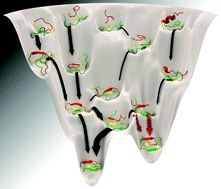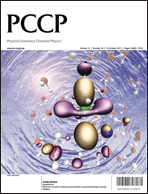Probing molecular kinetics with Markov models: metastable states, transition pathways and spectroscopic observables†
Abstract
Markov (state) models (MSMs) have attracted a lot of interest recently as they (1) can probe long-term molecular kinetics based on short-time simulations, (2) offer a way to analyze great amounts of simulation data with relatively little subjectivity of the analyst, (3) provide insight into microscopic quantities such as the ensemble of transition pathways, and (4) allow simulation data to be reconciled with measurement data in a rigorous and explicit way. Here we sketch our current perspective of Markov models and explain in short their theoretical basis and assumptions. We describe transition path theory which allows the entire ensemble of

- This article is part of the themed collection: Physical Foundations of Protein Folding

 Please wait while we load your content...
Please wait while we load your content...